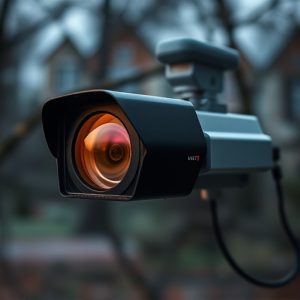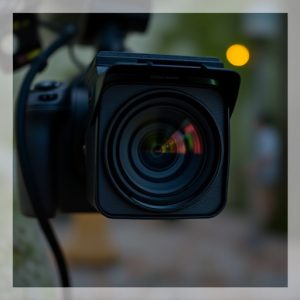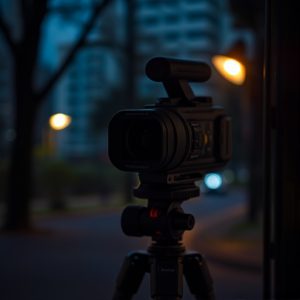Detecting Small Hidden Cameras in Nurseries: RF Guide & Prevention Measures
Small hidden cameras, often used in nurseries, pose significant privacy risks due to their miniature…….
Small hidden cameras, often used in nurseries, pose significant privacy risks due to their miniature size and ease of concealment. To safeguard children's safety and privacy, parents and caregivers must remain vigilant, employing methodical checks and specialized RF detection equipment to identify these devices' radio frequency signals. Proactive measures, including thorough scanning and using directional antennas, ensure comprehensive coverage and a secure nursery environment. Regular inspections, staff education, and robust security protocols create a culture of vigilance, enhancing overall security for infants in vulnerable settings.
Unveiling hidden cameras in nurseries is a growing concern, prompting the need for advanced detection methods. This comprehensive guide delves into the world of small hidden cameras, specifically designed to fit nursery settings. We explore the science behind radio frequency (RF) detection technology, offering practical steps to identify these covert devices. By understanding the latest tactics used by camera manufacturers, parents and caregivers can take proactive measures to protect children’s privacy. Learn essential prevention techniques and stay ahead in securing your nursery spaces.
- Understanding Small Hidden Cameras in Nurseries
- The Science Behind Radio Frequency Detection
- Practical Steps to Detect Hidden Cameras Using RF
- Prevention and Security Measures for Nursery Spaces
Understanding Small Hidden Cameras in Nurseries
Small hidden cameras, often used in nurseries, are a growing concern due to their tiny size and potential for invasion of privacy. These miniature devices can be easily concealed within everyday objects like plants, toys, or even wall outlets, making them nearly undetectable at first glance. Parents and caregivers must remain vigilant against these “small hidden cameras for nursery” as they pose significant risks to children’s safety and privacy.
Nurseries, with their bustling environments filled with curious minds, are prime targets for such devices. Children, unaware of their presence, might interact with them inadvertently, leading to serious consequences. Detecting these small hidden cameras requires a methodical approach, including regular checks of commonly overlooked areas and utilizing specialized equipment capable of identifying radio frequency signals that such devices emit. Staying proactive in this aspect is crucial to ensuring a safe and secure environment for the young ones under your care.
The Science Behind Radio Frequency Detection
The science behind radio frequency (RF) detection involves utilizing specialized equipment to emit and receive RF signals. This technology is particularly effective in detecting hidden cameras, including those as small as nursery-sized devices. When an RF signal encounters a hidden camera, it interacts with the electronics inside, causing them to reflect or absorb some of the energy. By analyzing these interactions, detectors can identify the presence of active cameras.
RF detection systems work by sweeping through various frequencies to find signals that don’t belong. Small hidden cameras for nursery often operate on specific bands, making them detectable when these frequencies are targeted. The data gathered from these scans provides crucial insights into potential surveillance devices, ensuring a safe and private environment.
Practical Steps to Detect Hidden Cameras Using RF
Detecting hidden cameras using radio frequency (RF) technology is a practical and effective method to ensure privacy in sensitive areas, especially in spaces like nurseries where Small Hidden Cameras might be employed. Here are some actionable steps to help you in this process:
1. Identify Potential Sources: Begin by understanding the capabilities of RF devices. Many hidden cameras operate on specific frequencies, often within the 2.4 GHz or 5 GHz bands. Use an RF detector or scanner capable of picking up these signals to identify potential sources within your nursery or target area. These detectors can help you pinpoint devices broadcasting on these frequencies.
2. Scan Thoroughly: Move the scanner throughout the room or area, ensuring comprehensive coverage. Pay close attention to areas where cameras might be concealed, such as behind pictures, mirrors, or electrical outlets. Hidden cameras are often strategically placed to evade detection, so a thorough scan is crucial. If you detect any signals, analyze their strength and location, which can provide valuable insights into the camera’s position.
3. Analyze Patterns: Regular RF signals from everyday devices can sometimes mimic those of hidden cameras. To differentiate between genuine sources and false positives, look for consistent patterns in signal intensity over time. Cameras often maintain a steady broadcast, whereas other devices might have intermittent or varying signals.
4. Utilize Directional Antennas (if available): For more precise detection, consider using an RF scanner with directional antennas. These antennas can help you locate the exact direction from which the signal is emanating, making it easier to pinpoint hidden cameras, especially in large rooms or spaces with many devices.
Prevention and Security Measures for Nursery Spaces
In today’s digital era, ensuring privacy and security in nursery spaces is paramount. One of the most effective methods to prevent unauthorized surveillance involves proactive measures against small hidden cameras for nursery environments. Regular inspections of rooms and common areas with specialized equipment can detect any illicit camera setups. This includes using RF (radio frequency) detectors capable of identifying signals from miniature cameras, which often operate on frequencies that are hard to trace.
Implementing robust security protocols, such as installing secure locks and access controls, further fortifies nursery spaces. Additionally, educating staff and parents about privacy best practices and the risks associated with hidden cameras fosters a culture of vigilance. Regular training sessions can help them recognize potential threats and ensure that all entry points are monitored, enhancing overall security for infants and young children in these sensitive environments.
Detecting small hidden cameras in nurseries using radio frequency (RF) technology is a proactive approach to ensuring privacy and safety. As discussed, these tiny devices operate on RF signals, making them vulnerable to specialized detectors. By understanding the science behind RF detection and implementing practical steps, nursery owners can take significant measures to prevent and identify potential security breaches. With the right tools and knowledge, it’s possible to create a secure environment for children, fostering peace of mind for parents and caregivers alike. Remember, staying one step ahead of hidden threats is key to maintaining a safe nursery space.


